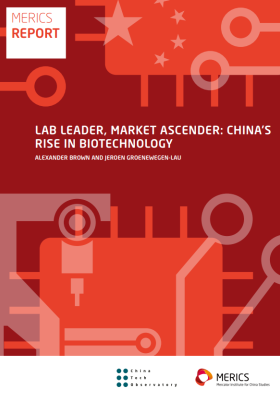

Gradual US export restrictions are helping China to work around the problems they create
Washington should re-think its approach to slowing Chinese tech development, says Antonia Hmaidi.
The USA’s piecemeal imposition of export controls on sensitive technology has created a porous regime that is failing to decisively constrain Chinese technology development. Beijing is acting with new resolve and profiting from buy-in from private companies, as the evolution of Huawei’s latest smartphones shows. While its P60, released in 2023, relies on stockpiled South Korean memory chips alongside an impressive array of home-made components, the Pura 70, released in 2024, uses even more Chinese technology – including memory chips.
When Huawei was placed on the USA’s Entity List of trade-restricted organizations and individuals in May 2019, its sudden existential need for Chinese technological self-sufficiency saw its further alignment with a long-held government ambition. Beijing had pursued plans for a semiconductor industry since the 1990s, but domestic manufacturers struggled as the likes of Huawei opted for better foreign-made chips – until Washington put a stop to that.
Since the US started imposing trade restrictions, Huawei and a slew of other Chinese tech companies have been buying more and more Chinese chips – even in preference to US chips whose exports are not controlled. Huawei’s Ascend chip for artificial intelligence (AI), for one, is seeing ever more adoption, despite more powerful offerings tailored for China by US chipmaker Nvidia. The constant possibility of more US restrictions means Chinese companies are willing to forego better US components to ensure long-term supply chain security.
Gradualism has defined US tech export-controls for the last decade
The USA’s gradualist approach has been a problem since its inception. When the Obama Administration in 2015 blocked the export of US chips for the Tianhe-2 supercomputer, China developed its own high-performance chips to replace them. When Washington denied China the chips needed for expanding Tianhe-2, China’s “863 project” to spur high-performance computing (HPC) gained urgency. As a result, the country now has a mature HPC ecosystem, including high-end chips manufactured on a 28-nm node process and supporting software.
This shows how step-by-step US export controls give Chinese companies time to work around – both current and potential – US-imposed tech shortages. Washington is creating sourcing problems for Chinese companies, but it has never been strict enough to deprive them of the technology to solve them. US chipmaker AMD in 2015 shipped key technology to a Chinese state-owned joint-venture partner. While this company was later put on the US entity list, it remains a key designer of deep-learning processors for the Chinese market.
The US approach allows Chinese companies to stockpile parts and to find alternative components only one or a few at a time. As a result, Chinese companies have never been forced to re-invent entire supply chains in one go. And because they can still import US semiconductor manufacturing equipment for older chips, they can use them to build alternative production lines. SMIC, China’s biggest and most advanced chipmaker, bought enough high-end equipment from abroad before falling under US trade restrictions that it can make 50,000 wafers per month using the highest-tech 7 nanometer process.
US gradualism is also helping Beijing prioritize by showing it what technologies and supply-chains to focus on. The Science and Technology Daily in 2018 named as many as 35 chokepoints where China was still dependent on Western technology. Before US trade restrictions, domestic companies tended to focus on “easier” technologies with shorter investment cycles. In semiconductors, they usually invested in design instead of capital-intensive manufacturing. Not only are those days over – the new Central Science and Technology Commission allows for more central steering of the mammoth task of keeping it that way.
Abrupt and comprehensive trade restrictions also bring problems
If the goal of US export controls is to slow down Chinese development by imposing domestic substitution, while keeping lost US corporate revenues to a minimum, gradualism could be the answer. However, China could be slowed down more thoroughly with stricter and more comprehensive restrictions that apply from day one. The current piecemeal imposition of export controls amounts to a strenuous but ultimately beneficial fitness program for Chinese companies – and a frustrating game of whack-a-mole for Washington.
If the goal is to keep China from developing certain technical capabilities at all, the US would have to target China’s entire semiconductor sector. Beijing’s involvement in steering the industry has become so deep that the US does not have a way of ensuring that profits from permitted transactions do not contribute to expansion of capabilities it is wary of. Furthermore, trying to control the entire sector could prove ineffective given China’s state of development and would also hurt US and other Western companies, decreasing allied buy-in.
If the US had opted for such a broad approach in 2015, when China’s semiconductor ecosystem was much less developed, it would have had more chance of success. Now, the US must ask itself whether even the attempt to slow – not stop – China is worth the cost. US resources could be used more effectively on strengthening US and allied technology and manufacturing - and getting good intelligence on China’s progress. This would allow the US to identify future chokepoints early enough to give a targeted strategy more chances of success.
